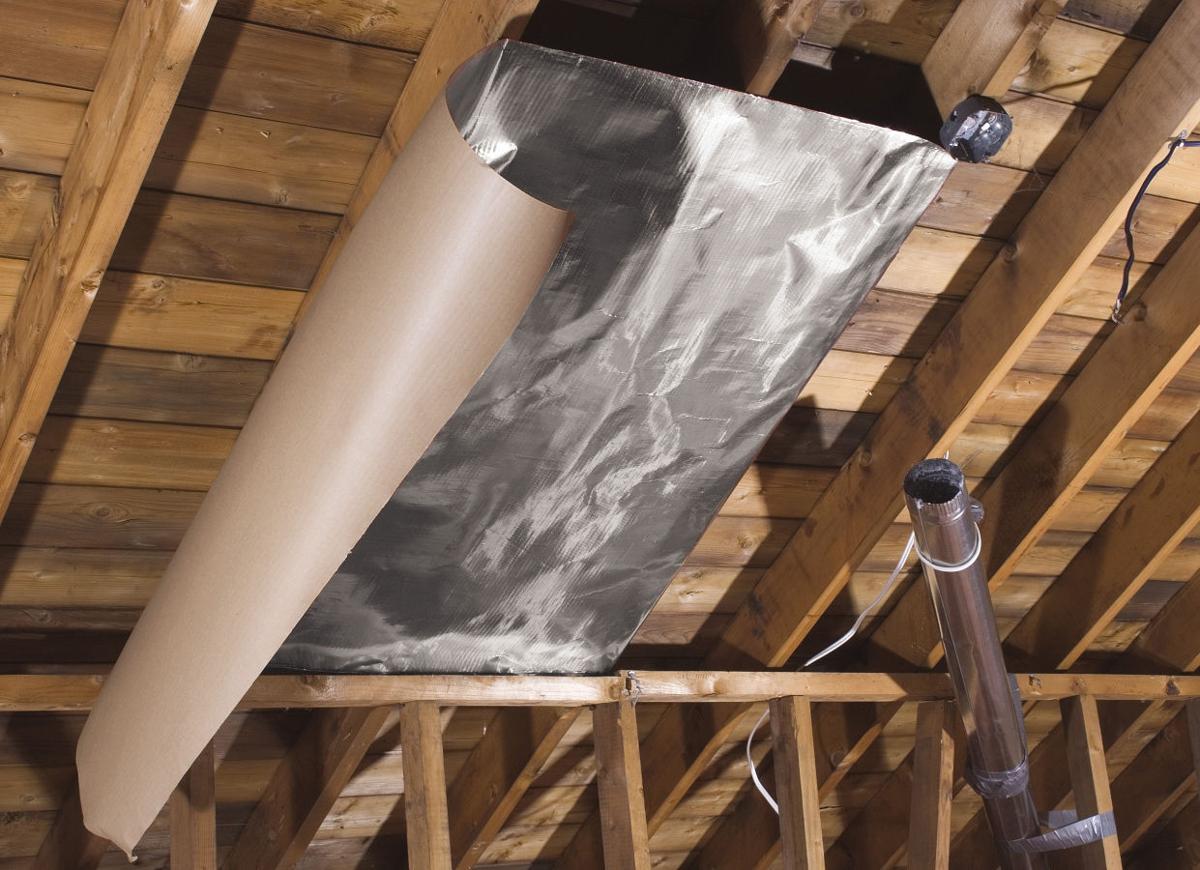Kraft faced insulation should be installed in exterior walls exterior basement walls and attic ceilings by pressing the product into the wall cavity with the paper side.
Attic insulation barrier on top of kraft.
Vapor barriers are sheets of plastic or other material placed on one side of insulation sheets.
Unfaced means the insulation lacks a vapor retarder paper or plastic facing.
Any new batt or roll insulation installed over existing insulation in the attic needs to be without a vapor retarder face.
This barrier is meant to keep moisture from getting to the insulation in the walls and ceilings and it is required by building codes when insulating most houses.
Some products are fiber reinforced to increase durability and ease of handling.
The two staple tabs of insulation paper laid on top of each other to the nailing surface of the stud would seem to be an imperceptible discrepancy perhaps a 1 16 or less.
Radiant barriers are utilized to reduce summer heat gain in attics and help to improve the efficiency of green building envelopes.
Kraft faced insulation includes a paper vapor retarder which helps prevent mold and mildew.
Kraft paper and its underlying asphalt adhesive are flammable and should always be covered with drywall or other fire resistant material.
The paper creates a vapor barrier that helps keep the water vapor in the warm moist heated indoor air from migrating outward into the wall or other structure.
When adding additional insulation to an attic that is already insulated never use insulation with a vapor barrier.
However stapling insulation in this manner creates and improper seating of the drywall during installation.
The purpose of insulation facing.
We take a look at how radiant barriers work the different types of radiant barriers and some of the.
A radiant barrier can lower heat transfer from attics to the building below keep the attic space cooler and lower cooling costs by up to 17 in warmer climates.
Faced insulation should not be placed on top of existing insulation in the attic.
The facing on kraft faced insulation is made of kraft paper with an asphalt coating that makes the paper impermeable to water vapor.
The vapor retarder on top of or between layers of insulation can trap moisture.
Radiant barriers consist of a highly reflective material usually aluminum foil which is applied to one or both sides of a number of substrate materials such as kraft paper plastic films cardboard oriented strand board and air infiltration barrier material.
If you do there is a chance that moisture that has slipped by the first vapor barrier will become trapped by the second vapor barrier decreasing the value of your insulation.






























